|
Nationwide commercial television
broadcasting companies wasted no time stringing coaxial cable and microwave towers
from sea to shining sea once the NTSC format standard was adopted and manufacturers
had spooled up production after World War II. Adoption of cable services was
slow because a fee was involved, but once purely cable channels started being added
the perceived value increase convinced consumers to open their wallets. Eventually
cable eclipsed over-the-air broadcasts for all but extremely rural areas that were
not serviced by cable. Along came satellite TV to take care of filling that void.
Once a small, inexpensive, unobtrusive Ka-band antenna replaced the huge S-band
backyard parabolic dishes and subscription prices dropped significantly, suburbanites
and city dwellers picked it up. Soon, cable companies were feeling the pinch as
their customer bases shrunk. Not ones to sit and take the loss, "cable" exploited
the rapidly falling landline subscriber base due to cellular service by pushing
VoIP via cable to the point where in some areas you cannot even get legacy twisted
pair telephone service. A recent
news headline reports that satellite TV subscribers are switching to Internet
streaming even though not all the same content is available on the Web, which has
caused a troubling scenario for satellite TV companies.
Networks for Television
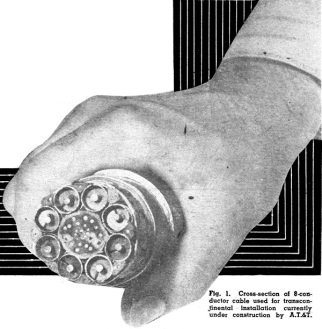
Fig. 1 - Cross-section of 8-conductor cable used for transcontinental
installation currently under construction by A.T.&T.
By Jordan McQuay
The technical status and future of video networks for inter-city programming
of multiple stations.
The horizon represents a strong challenge to the television broadcasting industry,
because it localizes every television station. The extremely high operating frequencies
of a sight-and-sound transmitter are effectively lost when they pass the horizon,
thus limiting the area of a station's usefulness and contributing to its remoteness.
To send televised programs to other cities or distant geographical regions or,
conversely, to obtain programs originated elsewhere, some sort of inter-city network
is required to pierce the restricting horizon and link together any number of widely
separated local television stations.
An even stronger reason for such multiple-station programming is the matter of
economics.
Television broadcasting is a costly enterprise. It requires considerable financial
backing, from both the technical and program standpoints. While the purchase of
technical equipment is recognized as a tangible investment in material, the high
cost of operating and programming a television station is both alarming in magnitude
and intangible beyond estimate.
The principal factor in the present retarded growth of television broadcasting
is not a shortage of equipment, but a general unwillingness of the industry to spend
large sums of money for good television programs!
When a single production of perhaps an hour requires from 60 to 80 people - actors,
actresses, set designers, carpenters, electricians, prop men, grip men, cameramen,
sound men, video operators, control monitors, directors, producers, etc. - with
rehearsals consuming from 6 to 20 hours or more, some idea of the cost can be estimated.
But more particularly, this televised program is available only to a local audience
- perhaps only a few thousand sets. So great is the cost of producing large-scale
or lavish programs - lengthy plays and musicals, requiring many changes of settings,
props, lights, etc. - that few existing television stations can afford to stage
and photograph good entertainment for such a restricted number of listener-viewers.
And good entertainment is defined as that on a quality scale comparable to theater
motion pictures.
This comparison with the cinema art is important, because television must compare
favorably with theater motion pictures, if television is to succeed as both an art
and an industry.
Television is also in need of a mass audience, so that commercial advertisers
will take an interest in the medium.
The only method of lowering the enormous cost of individual programs produced
for a local or limited audience is the syndication of such programs, as in radio
broadcasting, by means of multiple-station distribution networks. Also, this is
the only method of reaching and developing a mass audience, for commercial purposes.
To prevent duplication of local service, such television networks must be inter-city,
as well as inter-regional.
Thus, the economic factor of television broadcasting is closely integrated with
the technical aspects of the new industry.
Confronted with this urgent need of the television industry, practically all
of the larger, technical communications corporations, as well as equipment manufacturers,
have responded with extensive research and development toward systems of network-linkage
for television stations.
There are three principal methods of multiple-station programming for television,
and each is a billion-dollar enterprise in itself. The three basic systems to be
considered are: 1. Coaxial cable (multi-service type); 2. Radio relay (microwave);
3. Film (prepared for television use).
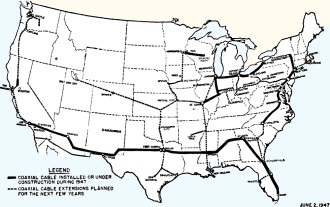
Fig. 2 - Map shows existing and proposed routes of coaxial
cables.
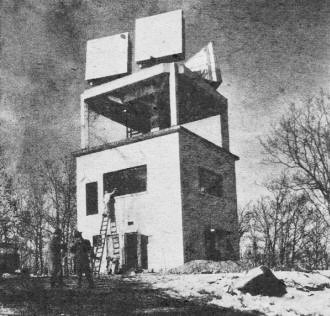
Fig. 3 - One of the seven relay stations in the new microwave
system connecting Boston and New York, located atop Jackie Jones Mountain near Haverstraw,
N. Y. A pair of shielded lens antennas provides two-way transmission with 1-watt
beamed waves at 4000 mc. Developed by Bell Laboratories, the radio relay system
provides wide-band communications link for television.
The first two systems have not been developed entirely for the exclusive use
of television, since it is intended for both coaxial cable and microwave radio links
to also transmit carrier telephony, telegraphy, telephoto, tele-printer, ticker
and high-speed business machine signals, facsimile signals, and other services.
Although not a network in the physical sense, film of the motion-picture type
but prepared exclusively and especially for television is included in this analysis,
because of its inevitable use as an economical substitute (for the first two systems
mentioned) during the next decade of television - and, perhaps, the next decade
after that!
All of the three systems are as yet in various stages of experimental testing
or initial construction. An important time element - of from 6 months to 1 year
- permits more careful consideration of each system by the television industry prior
to the adoption of one or more. And the cost of each service is a significant factor
in this competition.
Of the three network 'systems, only one, coaxial cable, is now in use as a limited
regional network on the East Coast.
Coaxial Cable
The idea of wire or cable transmission of a wide band of frequencies is not new,
since a workable system was developed and put in operation by the Bell System over
ten years ago to provide limited television program service between New York and
Philadelphia. The wide-band system of transmission proved feasible, not only for
occasional television programs but, more particularly, for handling a large number
of carrier telephone channels continuously and simultaneously. An energetic research
and development program was then put into effect by the Bell System, eventually
resulting in the highly efficient coaxial cable system of the present day.
A section of this transmission cable (Fig. 1) actually contains eight independent
concentric cables - together with 49 paper insulated wires for testing and maintenance
purposes. The insulating discs, separating outer and inner conductors of each cable,
are constructed of low-loss polyethylene and spaced about one inch apart. A long
section of a cable - with repeaters or boosting amplifiers, and other gear - has
a bandwidth of approximately 2.8 megacycles, which is adequate for most monochrome
video signals. Impedance is about 75 ohms at the higher frequencies of operation.
The complete cable is buried directly underground by enormous, mobile, cable-laying
apparatus (Fig. 5), which plows a suitable burying trench, deposits the cable
in place (Fig. 7), and then covers the excavation, in a continuous operation.
Originally scheduled for only 6000 miles in 1944, the Bell System's present cable
construction program now calls for 12,000 route miles of this broad-band facility
to be in service by the end of 1950. The map (Fig. 2) shows the cable network
now in place or now under construction (all solid lines) and extensions to be completed
within the next three years (dotted lines). These installations, it should be noted,
follow the major telephone traffic routes of the country. Two complete coaxial cables
have been installed between Washington and New York, which is the heaviest telephone
traffic route in the country.
Repeaters for the coaxial cable system are built around a small, high-gain video
amplifier tube, somewhat similar to the type 6AK5. The wideband amplifier consists
of three stages with feedback, giving an over-all gain of 50 db. at the high frequencies
of operation. Each amplifier is adjusted to provide just sufficient gain to equal
the loss in a fixed equalizer - plus the natural loss of the cable. Each stage is
equipped with parallel tubes, so that if one tube in any stage fails to function,
operation of the amplifier will not be affected. A repeater (amplifier) is inserted
in a coaxial line about every 6 or 8 miles.
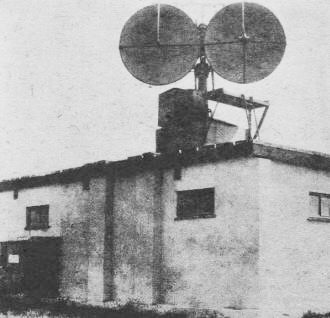
Fig. 4 - Parabolic reflector antennas in use with two-way
experimental radio relay system for television.

Fig. 5 - A giant cable plow used for laying coaxial cable
is shown in operation. Line runs from Baltimore to Washington.
The 8-conductor cable (Fig. 1) normally provides 480 carrier telephone circuits
simultaneously,. using r.f. modulation with crystal control. This is the primary
purpose for which the coaxial cable was designed and developed; to increase the
number of available long distance telephone circuits, and not, as many suppose,
for carrying television programs.
Two normal channels are combined, by means of suitable terminal equipment, to
provide for transmission of high-quality audio programs, as required for radio network
distribution (for later broadcasting). The cable thus provides audio program channels
of greater frequency bandwidth than that needed for ordinary telephone conversations.
Telegraph transmission by coaxial cable requires much narrower frequency bands
than those normally used for long distance telephony, and suitable terminal equipment
divides a single channel into either 12 or 18 separate telegraph transmission channels.
Use of the coaxial cable for video or television signals, however, requires the
entire usable frequency bandwidth, about 2.8 megacycles, of all channels of the
cable system. Thus, transmission of a single television program over any given section
of coaxial cable prevents the use of that cable section for any other of the multiple
services (telephone, telegraph, facsimile, etc.) which it is otherwise capable of
carrying.
Since development began, experimental television transmission over the inter-city
coaxial cables between Washington and New York was furnished free to television
broadcasters. Now, however, these facilities are available only on a commercial
basis! Recent publications of the tariffs created a near-panic in the television
industry. The charges averaged better than $40 per circuit mile of cable linking
New York, Philadelphia, Baltimore, and Washington. The rate of inter-city movement
of television programs now costs almost ten times the rate to send audio network
programs (for later broadcast) between the same cities. Higher rate for television
facilities is justified, however, by the technical difficulties involved in handling
video signals and the limited number of cable conductors between cities which must
be shared with telephone, telegraph, and other services. But from the operational
standpoint, this high cost probably will prevent many television stations from accepting
programs originating in other cities. For example: A television station in Washington
would pay a minimum of $9500 monthly for video program service from New York, and
vice versa.
While the effective bandwidth of this coaxial cable system is entirely adequate
for most television work, it places a pronounced limitation on the degree of picture
fidelity. For the transmission of chromatic television, requiring a bandwidth of
at least 6 megacycles, the coaxial cable is useless.
Nevertheless, limited facilities for inter-city distribution of television programs
are now in existence (Fig. 2) and extensive facilities for national network
coverage will be available within a few years - at a price. However, considering
the economic factor, it's extremely doubtful that the demands of television will
ever become so strong financially as to force the Telephone Company to lease any
sizable proportion of its coaxial cable facilities, because these facilities will
yield higher revenue when used for other communications services.
Seeking to avoid excessive cable tolls, some television broadcasters and manufacturers
have turned hopefully to fixed, point-to-point, microwave radio relay systems.
Radio Relay
The development of microwave techniques for selective communication makes these
tiny radio waves ideally suited for highly directional, overland point-to-point
transmission of video signals. Because of the nature of these waves, low-power but
stable radiation is possible at operating frequencies of thousands of mega-cycles
with virtual elimination of noise and other interference.
The portion of the frequency spectrum between 1 meter and 1 centimeter is relatively
unused by other radio services. In that range there is instantly available nearly
10,000 channels (3-mc. wide) for transmission of monochrome television, or nearly
5000 channels (6 mc. wide) for radio-relay transmission of chromatic (color) television
programs. These figures can be amplified to almost any number, since distance limitations
permit many stations to operate on the same channel frequency within relatively
small distances of each other.
Much of the effectiveness of a microwave radio-relay system is due to the characteristics
of such waves. Microwaves are extremely short in length, and behave much in the
manner of light waves. Radiated energy from a microwave transmitter can be concentrated
toward a distant receiving point by means of a highly directional antenna. At the
receiving point, such radiations are "collected" by another, similar antenna. Microwaves,
like light waves, travel in straight lines and do not follow the curvature of the
earth, thus the receiving point must be within view of the transmitter. Such a group,
of transmitter and distant receiver, is known as one link of a relay system.
By feeding the output of the receiver to another transmitter and its antenna,
at the receiving site but facing oppositely, the microwave signal is reradiated
and can then be picked up by another, distant receiver. In this manner, by arranging
successive links in tandem, the microwave beam of concentrated energy can be relayed
to any desired, distant point of reception. The process is practically instantaneous;
almost at the speed of light.
Although the distance range of a single link is limited to the line-of-sight
or optical distance between transmitter and receiver, two or three frequency assignments
can be used and reused by successive links of the system.
The microwave beam is modulated by the wide-band or video signal, and the factor
of bandwidth is just as important as for the coaxial cable. Two-way operation of
a relay system over the same path requires a double beam, one directed oppositely
to the other. Thus, a single relay point is equipped with two directional antennas
for each of the two links of the relay circuit; one for transmission of one beam,
one for reception of the other beam. For centimeter operation, these usually consist
of parabolic reflectors (Fig. 4) or horn or lens antennas (Fig. 3).
A microwave radio relay system has several advantages over coaxial cable for
television networks. Very little time is required to locate or relocate towers or
other antenna structures. Difficulties of construction over water, deserts, rocky
regions, and mountains are greatly reduced. When all links of the relay system are
adjusted and functioning properly, the general quality of video transmission is
much improved. All maintenance is concentrated at the antenna towers or buildings,
instead of being distributed along the length of a cable buried underground.
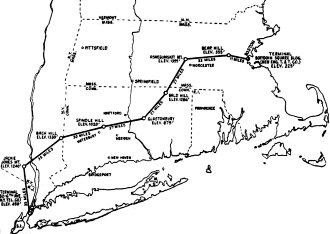
Fig. 6 - A. T. & T.'s radio relay system operating between
New York and Boston.
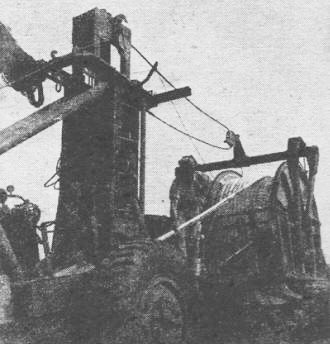
Fig. 7 - Coaxial cable on reel (at right) is guided into
cable plow (left) and buried in earth, as plow is drawn by tractors.
Main disadvantage of microwave radio relay systems is their inherent ability
to generate and amplify noise and similar interference. Improved circuit design
of amplifiers is likely to overcome this important objection. While operational
and maintenance costs are low, the initial cost of this equipment is considerable,
since a great many relay points are required to link cities separated by an appreciable
distance.
Relay towers are generally constructed as high as is compatible with structural
safety, and the transmitting and receiving antennas are mounted somewhere near the
tops of the towers. Equipment at all relay points is standardized, and individual
stations operate unattended. Maintenance personnel is stationed at main terminal
points, equipped with precision, fault-finding apparatus.
Cost of constructing a microwave radio relay system of any appreciable circuit
length (over 50 miles) is considerable, and increases with distance at a greater
rate than coaxial cable facilities.
Again, the operational cost figures heavily against television. Because of the
expense of such installations, it is far more profitable for the microwave relay
system to be used by the other communications services, telephone, telegraph, wirephoto,
etc., who are prepared to pay high rates for use of the facilities. Resultant revenue
would be far in excess of that obtained from a single television or video service
over the same system.
After five years of extensive experience in the operation of a commercial radio
relay system between Philadelphia and New York, RCA has developed a 1-centimeter
radio relay system for Western Union, having a bandwidth (received) of 4 megacycles
occupied by 32 channels for carrier telephone, telegraph, facsimile, and similar
services. There is no provision for television service in the Western Union system.
Unless a radio relay system is owned and operated, or its operations directly
controlled, by individuals or corporations within the television industry, it is
unlikely that television programs will be transmitted by such a system, because
of the economic factors involved.
Philco, Raytheon, and a few other radio manufacturers have inaugurated extensive
programs covering research and development of new microwave radio relay systems.
But detailed data on their technical accomplishments, if any have been made, are
not available.
Effectively competing with itself in at least one aspect - coaxial cable - the
Bell System has also entered into active development of microwave radio relay equipment
with some very promising results. Construction work begun a year ago on a Boston-New
York relay circuit (Fig. 6) has just been completed. The system consists of
two main terminals, and seven relay stations. One of them is shown in Fig.
3. Average distance between relay points is about 27 miles; distance of the total
circuit is about 230 miles. The system operates with a frequency in the vicinity
of 4000 megacycles, using two channels in each direction of transmission. A usable
frequency bandwidth of almost 4 megacycles is available for television service,
but all channels are to be used normally for carrier telephone operation. At each
relay point, radiation and reception is accomplished by electromagnetic horns (Fig. 3)
with 10x10 foot apertures, and equipped with a metal lens to focus the microwaves
into a highly directional beam.
A similar radio relay circuit between New York and Chicago will soon be under
construction, also by the Bell System, requiring more than 40 relay points between
terminal stations. Three years will be needed to complete the work, at an estimated
cost of seven million dollars.
One other type of radio relay system called "Stratovision" is worthy of mention,
only because of its unique nature and purely theoretical possibilities. This system
of television broadcasting - from a specially equipped, high-altitude plane in flight
over a service area - was publicized widely a few years ago. But despite a few tests
made under ideal conditions, the system has yet to be proven practicable.
Video programs originating on earth are transmitted - via microwaves - to a Stratoliner,
flying above an area in continuous circles at an altitude of about six miles. There
the television signals are received, and then broadcast toward the earth with a
more-or-less conventional television transmitter. In this way, limiting effects
of the horizon are overcome and, theoretically at least, a vast area on earth could
receive the radiated programs. The originator (Westinghouse) claims that 78 percent
of the population from coast-to-coast would be able to receive guaranteed, (sic)
clear reception and sharp images. Main difficulty with this theory of operation,
is that airplanes characteristically deflect television signals causing momentary
interference and, occasionally, ghost images at the point of reception. Exhaustive
tests are said to have been made during the past year, but no results have been
published or made available to the public.
Film
Quite apart from the economic limitations and any technical inefficacies of the
types of network systems previously described, there is an important element of
availability of these systems, which should certainly be considered.
Even after completion of the proposed coaxial cable network, it may be of no
practical use for television if the industry is expected to lease sections of the
cable at a price in proportion to the number of channels required for transmission.
With a swing to higher definition or, eventually, to chromatic pictures, in either
event the coaxial cable will be obsolete.
Most potential hope for television networks are microwave radio relay systems,
if they are owned and operated by those within the television industry. However,
it will take many years to construct sufficient beam circuits to reach all centers
of large population.
Television is in need of a mass audience today! And unless a definite audience
is assured, advertisers will not spend money for television programs-a station's
only source of revenue.
Solution of the immediate problem of a television network is film. Not ordinary
theater motion-picture film, but motion-picture-type film - made for, and used by,
television broadcasting stations only. Though not strictly a "physical" television
network, the use of television film is the most practical and immediate means of
inter-city multiple-station programming.
Film could be produced much more economically than the installation costs of
coaxial cable or radio relay equipment. Film would be equal to, or a considerable
improvement over, a "live" presentation of the same program, because the television
film could be edited just as motion-picture or theater film. Since the film is exclusively
for video reproduction, all aspects of its production are specifically designed
for television's small screen and gray shading.
Only film guarantees adequate lighting of scenes, flawless dialogue, absolute
focus, and repeat performances of uniform quality. Time-zone differences-such as
exist between New York and California - would be unimportant if the video program
was on film.
The technical aspects of film production more correctly belong in the category
of motion pictures, since only the lighting, directing, and general philosophy are
changed when making films exclusively for television. For this reason, technical
data on film production is not included in this system's analysis.
Film size most likely to be used for television will be 16 mm, which is more
practical and economical than larger motion-picture theater film. The speed of television
film, 30 frames per second, requires special projection equipment, but general operation
is identical to theater technique. Operating costs of a film "network" are negligible.
Entertainment, not spontaneity, is an important factor in television program
appeal. And from the economic standpoint, as shown, the cost is very low. Until
suitable coaxial cable or radio relay network systems are established, requiring
at least a decade for national coverage, the logical and economical method of multiple-station
television programming is by means of film.
Posted May 4, 2022
(updated from original post
on 8/21/2015)
|
















